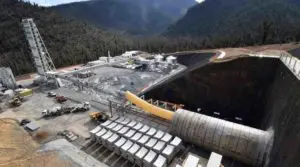Energy market bodies reluctantly acknowledge that governments interfere and will always do so. That would be more tolerable if everyone was on the same page.
To date in Australia, there hasn’t been a shared vision. The lack of a nationally consistent energy policy has caused a roller-coaster of investment and meant we lack the planned coal closure measures that many other countries have in place.
There is some light, however. The Australian Energy Market Operator (AEMO) has stated it will be able to manage 100% instantaneous penetration of renewables across the National Electricity Market (NEM) by 2025. This will be a remarkable achievement.
And AEMO’s draft 2022 Integrated System Plan released December 2021 provides a starting point for an aligned market-government vision, showing how it’s possible to transition to 100% renewables 100% of the time. These are a start.
Further, state governments have shown leadership in the energy space. Setting a vision and developing a program to support clean energy deployment has been most clearly articulated by NSW Treasurer and Energy Minister Matt Kean. He understands that governments should be leaders and set clear direction.
Through the NSW Electricity Infrastructure Roadmap, Kean has set a direction focussed on stimulating private sector investment to provide replacement generation as coal plants exit ahead of technical end-of-life.
Other state and territory energy ministers, while not all as ambitious as Kean, have also developed plans and policies in line with ‘net zero by 2050’ emissions reduction targets.
The Federal government however has no such plan. It has interfered, especially through taxpayer-funded projects Snowy 2.0 and the Kurri Kurri gas plant, but it is in no way aligned with rapid decarbonisation.
In her recently released book, Mariana Mazzucato, Professor of Economics and Public Value at University College London, attributes the success of the American lunar mission to pairing the resources of government with the private sector on a short leash to achieve a clear goal. Mazzucato refutes the myth that businesses create value and take risks and governments simply exist to fix market failures.
What is particularly relevant to the NEM is her view that instead of sitting back and waiting for market failures, government agencies should be shaping markets.
The Australian Energy Market Commission (AEMC) was set up under the former worldview – that it just needed to facilitate tweaks to the system.
It’s legislative chestnut, the National Electricity Objective (NEO) states: “The objective of this Law is to promote efficient investment in, and efficient operation and use of, electricity services for the long-term interests of consumers of electricity with respect to: (a) price, quality, safety, reliability, and security of supply of electricity; and (b) the reliability, safety and security of the national electricity system.”
What’s missing here is an environmental objective – a requirement to reduce emissions to meet Australia’s international obligations.
Every rule change in the NEM is assessed against the NEO. Energy ministers could push through legislative change for, say, a net zero electricity system by 2035, as part of the NEO that would mandate a shared mission, aligning governments and energy market institutions. The U.S. is grappling with similar issues about defining the public interest for regulatory commissions. We are well past the time to have ensured an emissions reduction objective as part of the NEO.
But, of course, changing the law would not be a silver bullet. Governments also need the means to hold energy market institutions to account to implement decarbonisation. And both governments and energy market institutions need the expertise to do implementation well.
Professor Mazzucato calls out the current practice of outsourcing to consultancy firms (KPMG, EY, BCG, McKinsey, etc) and their expensive “parasitic relationship” with government. The state needs muscle and much greater capacity, including in public private partnerships, to serve the public interest. Otherwise, it’s at risk of being captured by the expertise in consultancy firms, and the public is liable to pay through the nose for advice that should be able to be provided in-house. The depletion of the Commonwealth public service is such that if you were to start tomorrow, it would take a decade to build back up the expertise we have lost.
State electricity commissions, formerly the heart of energy planning and operations, were large institutions with the capacity to take on large numbers of young graduates and train them as energy specialists. Of course, there was the risk of sweetheart deals with unions such that public bodies could be bloated, with excessive and/or overpaid workforces. But now we have consultancies that make large profits (and political donations) instead. Mazzucato writes that we need to “reinvest resources into structures that foster knowledge creation, learning and creativity inside the civil service. It is impossible to co-create value without this”.
She also highlights digital and data as areas where governments need dedicated expertise. This also resonates with the NEM’s shortcomings for consumers. For example, it won’t be until the end of 2022 that household consumers will be able to access their own data from the big three retailers. Without data access, it is hard for third party providers to optimise consumers’ electricity generation, storage and use behind-the-meter. This will be further exacerbated as Australian households switch to electric vehicles. National advocacy body Energy Consumers Australia is keenly aware of this issue, but progress has been negligible.
There are a multitude of challenges to create the vision and implementation apparatus to enable rapid decarbonisation in the NEM. Some argue we should leave it all to the states, but we still have the handbrake of the current Federal Government.
Perhaps in 2022 we can legislate for emissions reduction, but this is only a starting point. The Institute for Energy Economics and Financial Analysis (IEEFA) will this year be developing research and analysis that aligns with mission-orientated energy policy. We welcome discussion on how to reform the NEM to enable rapid decarbonisation.
By Dr Gabrielle Kuiper, DER Specialist and IEEFA guest contributor










